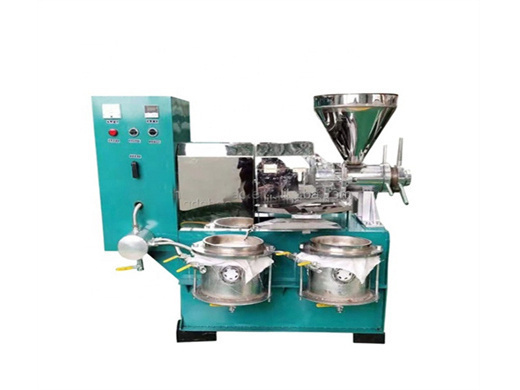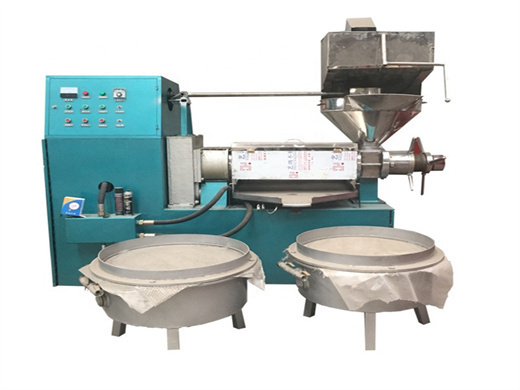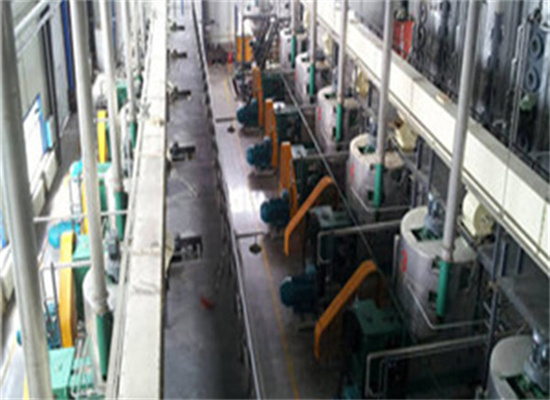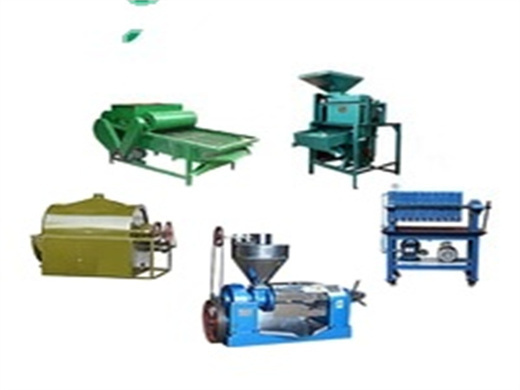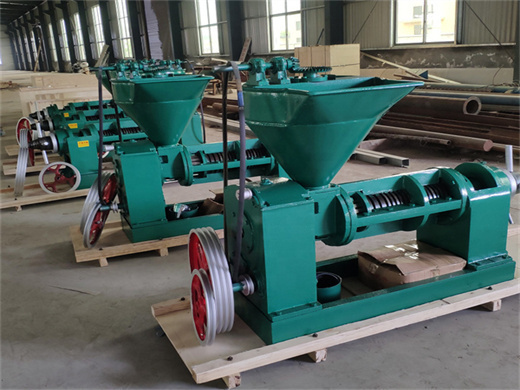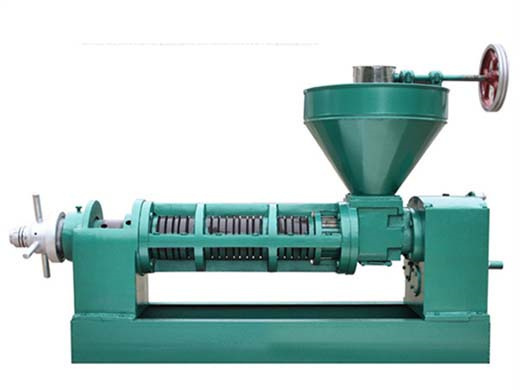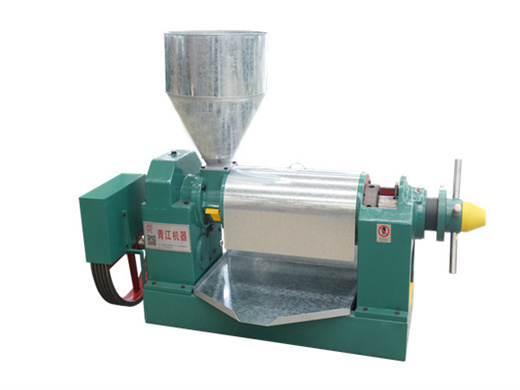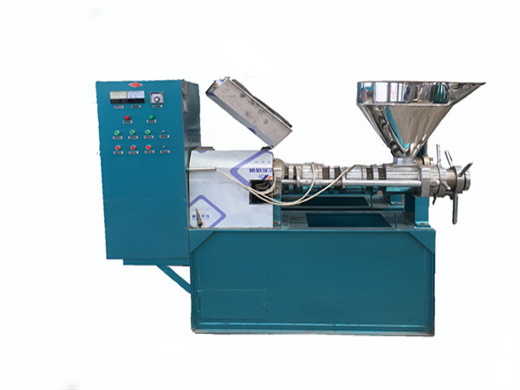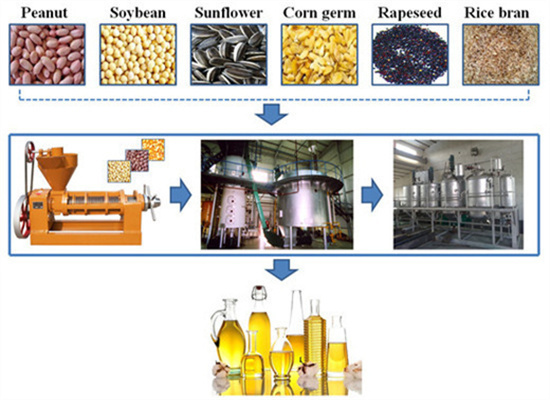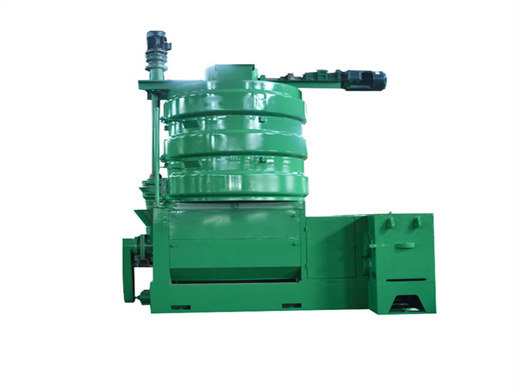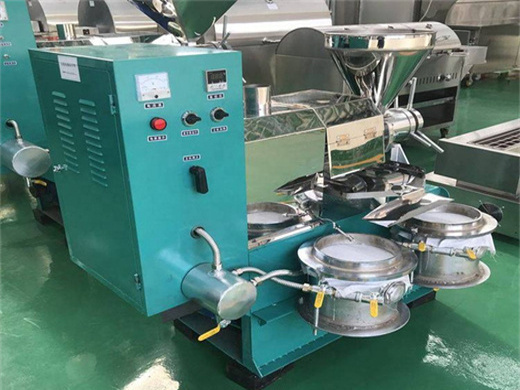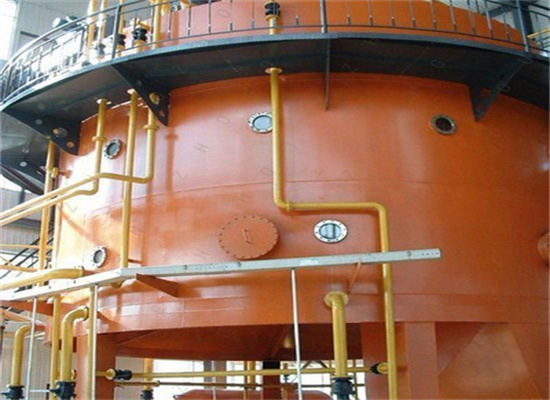bottom high oil yielding sunflower oil plant in ghana
- Type: Spiral Sunfower Oil Press
- Application: All, Sunflower Wheat, Starch, Rice flour
- Voltage: 220V
- Appearance: Horizontal
- Press Materials: Sunflower, All seeds
- Press Series: Second
- Usage: Sunflower Oil Extraction Machine
- Control Way: Automatic
- Voltage.: 380V, 220V/ 380V
- Capacity: 150 Kg/H
- Working Pressure: 60MPa
- Oil Cake Diameter: 185mm
- Type.: Cold & Hot Cooking Oil Pressing Machine
- Dimension: 600*880*1150mm
- Core Parts: Motor, PLC, Hydraulic System
- Weight: 550kgs
- After Warranty Service: Online Support
- Working Capacity: 4-32kg/H
- Cooking Oil for: Sunflower Oil, Sunflower O
- Usage 1: Sunflower Oil Pressing Machine
- Application 1: sunflower oil presser
- Transport Package: Plywood Case
- Specification: 1000mm*538mm*1050mm
- Production Capacity: 8000set Per Month
Embracing the Golden Opportunity in Sunflower Oil Production in Ghana. August 26, 2023. No Comments. By Roselyn Ganyaglo. Researchers in Agriculture have made a case for a boost in sunflower oil production in Ghana. This is expected to save the country some 4 million US dollars used to import the oil for fish processing companies.
High oil sunflower varieties such as VNIIMK-3519, VNIIMK-6540, VNIIMK-8931, Peredovik, Armavirsky-3497 and VNIIMK-309 developed by Pustovoit and his associates enabled the spread of sunflower as an oilseed crop (Pustovoit 1964 ). Much of the change was achieved by breeding for thin hulls surrounding the kernels.
Ghana to start cultivating sunflower in large quantities in 2024
- Usage: Oil Press Machine
- Type: Oil Press Machine
- Production Capacity: 80kg/h, 500kg/h, 100kg/h
- Model Number: DT
- Voltage: 220V/380V/440V
- Power(W): 10-50kw
- Dimension(L*W*H): 1610x615x1260mm
- Weight: 1050 KG
- Product name: Sunflower Oil Extraction Production Line
- , long term technical support
- Supply scope: EPC/Turn-key Project
- Performance: Excellent
- Acid value: depend on the oil seed quality
- Machine Material: Stainless Steel
- Color of machine: depend on your requirement
- Advantage: High output
- Refined oil: No smell , ligLD color , low acid value
- Application: Sunflower.retc
The Tropical Agricultural Marketing and Consultancy Services (TRAGRIMACS) on Wednesday launched a Ghana Sunflower Project for the cultivation of sunflower in large quantities in the country from 2024.
He said the production of sunflower oil would also contribute to mitigating the impact of climate change and gain some carbon credit for Ghana. “With its impact on climate change, the biodiesel extracted from sunflowers can be burnt to reduce carbon imprint in the environment, sunflowers also grow well in grasslands and can be used to reclaim all lands degraded by galamsey,” he said.
Edible Plant Oil: Global Status, Health Issues, and Perspectives - PMC - National Center for Biotechnology Information
- Usage: small oil processing plant
- Production Capacity: according to the capacity
- Model Number: QIE Sunflower oil machine
- Voltage: 220v,380v,440v
- Power(W): 5.5KW, 7.5KW, 15KW, 18.5KW
- Dimension(L*W*H): 1610x615x1260mm
- Weight: 1050 KG
- Certification: CE,BV,ISO
- name: small oil processing plant
- raw materials: fresh Sunflower
- texture: stainless steel,carbon steel
- package: wooden case special for Sunflower oil machine
- other materials: Sunflower Oil ,Sunflower
- using popular area: Srillanka, Malaysia,Phillipine,Nigeria,America tropical area
- main business: South East Asia,Middle America,West Africa
- using life: more than 15 years
- Material: Stainless Steel 304
Introduction. Edible plant oil (EPO) is obtained from the seeds, pulps, fruits, and plumules of certain plants. As one of the three major energy resources for human life activities, EPO is majorly used in cooking, but also used in a small amount for cosmetics, health supplement capsules, and other purposes.
Recognizing the economic implications and potential for agricultural growth, TRAGRIMACS envisions tapping into the $152 million sunflower oil industry in Ghana. More households are embracing sunflower oil due to its health benefits, making the prospect of domestic production all the more promising. Beyond economic gains, the Ghana Sunflower
Consumers’ Perception and Consumption of Sunflower Oil in Kumasi, Ghana
- Usage: Grain press
- Type: Other
- Production Capacity: 5TPD-100TPD
- Voltage: 380V/50HZ/Triple phase
- Dimension(L*W*H): 1510*440*700mm
- Weight: 330kg
- Core Components: Motor
- Name: Screw Oil Expeller
- Raw material: Sunflower Seeds
- Capacity(set): 80-150Kg/h
- Function: Making Edible Oil
- Application: Oil Production Line
- Color: Optional
- Material: Stainless Steel or carbon steel
- Advantage 1: High Oilput
- Advantage 2: Easy Operation
- Advantage 3: Automatic photoelectric detection functions
- After Warranty Service: Online support
- Certification: CE ISO
This study employs the binary logit model to analyse the factors that influence the consumption of sunflower oil in Kumasi, Ghana. A cross-sectional approach was used to obtain data from 200
Price Entries. Discover price entries of Refined Sunflower Oil in Ghana. Select an entry to view the details. Domestic Price. Refined Sunflower Oil / Premium Quality. Sunflower Oil / Chemical Extraction / Whole / Premium Quality. Accra (Accra) Last Reported Price. USD 0.96 / kg.
Economics of Oil Plants: Demand, Supply, and International Trade
- Usage: Sunflower Oil
Production Capacity: 35-550kg/h - Voltage: 220V/380V
- Power(W): 2kw(heater);1.5kw(cold)
- Dimension(L*W*H): 900*850*1550MM
- Weight: 1000KG
- product use: Sunflower s Sunflower pine seed Sunflower
Oilseeds are an important group of crop plants whose oil can be used for food, animal feed, and chemicals. Oil plants include herbaceous plants (flax), trees (palm), and even fungi (Fusarium). Oilseed crops have been grown around the globe under various agroclimatic situations and are considered important crops due to their commercial value.
Oil yields in the 0.7 m row-spacing treatment increased over the whole of the 2.0-14.3 plants m-2 range of populations explored. ... This may be due to the negative effects of increased disease pressure and increased susceptibility to lodging at high sunflower
- How to increase oil palm yields in Ghana?
- Best management practices close yield gaps in mature oil palm in Ghana. Short-term yield increases are achieved through improved crop recovery. Improving crop recovery provides the finance needed for inputs to increase yields. Improved fertilizer recommendations are essential to increase yields in Ghana.
- Is the BMP process applicable to the Ghanaian oil palm industry?
- Significant yield improvements were achieved at sites representative of the Ghanaian oil palm industry, thus proving the applicability of the BMP process, which has also been successfully implemented in Southeast Asia and Latin America.
- What is the difference between smallholder and plantations in Ghana?
- Whilst plantations in Ghana are distinguished by their large size, mono-cultural character and systematic layout ( Gyasi, 1996 ), the smallholder sector is largely shaped as an unorganized mosaic of low-yielding small farms within a highly fragmented agricultural landscape ( Phalan et al., 2009 ).
- Which country produces the most palm oil?
- In SSA, Nigeria, Cameroon and Ghana produce the most palm oil (7.9 Mt yr ?1, 2.7 Mt yr ?1, and 2.4 Mt yr ?1 in 2014 respectively), while the largest expansion in area over the past decade (2004¨C2014) took place in the Democratic Republic of Congo (+118,000 ha), Cameroon (+81,000 ha), Ivory Coast (+74,000 ha) and Ghana (+31,500 ha) ( FAO, 2017 ).
